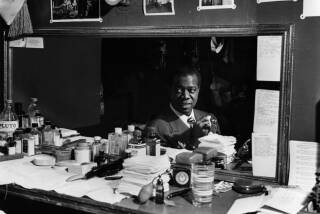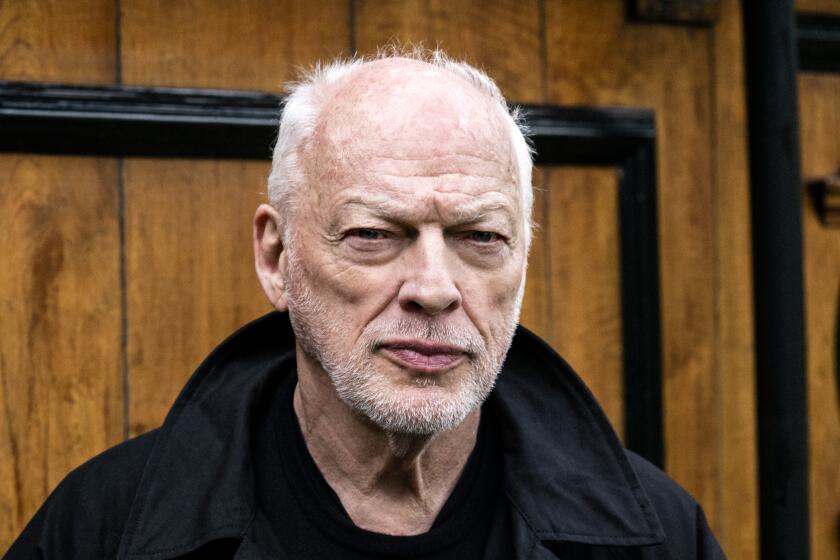AN APPRECIATION : Remembering ‘Sassy’ Sarah Vaughan
- Share via
The call came late in the evening, bearing news many of us had long feared we would soon hear: Sarah Vaughan was gone, dead of lung cancer at 66.
There was a strange, sad irony to the timing, for on the previous day she had been scheduled to make a recording session. Quincy Jones, who had planned the date, knew how ill she was but hoped she would have enough strength left to come to the studio; but over the weekend she collapsed, was hospitalized and finally, when the doctors knew there was nothing more that could be done, she was brought home Tuesday.
Sarah Vaughan’s voice was exceptional from the beginning, but in the early years nobody could have predicted the evolution that would come: The expansion of her range, the fullness and beauty of her tone quality, the unique control over an audience. She could hold a crowd of 18,000 at the Hollywood Bowl spellbound with a version of “Send In the Clowns” that invalidated every other rendition.
A few admirers who are still around may recall the very first night of her professional career. As the curtain rose at the Apollo Theater in Harlem, we saw the Earl Hines Orchestra, and adjoining Hines’ piano was a second piano, played by this slim girl who had just turned 19. Sarah was a trained musician whose studies of piano and organ equipped her with a knowledge of harmony that enabled her to alter a melody in subtle, unprecedented ways. Halfway through the show she stepped away from the piano to center stage and sang “Body and Soul.” It was the start of a career that would scale new heights with every decade.
Because of her sensitive ear for the new jazz of the day, she became part of a group of friends who were launching the bebop movement. One was Billy Eckstine, whom she knew when both of them were singing in the Hines band. When he left to form his own orchestra she, too, quit and joined Eckstine, whose popularity at that time was such that she was only a secondary figure. Another close friend was Dizzy Gillespie, who worked with her in both the Hines and Eckstine bands.
One day Gillespie gave me a demonstration record Sarah had made. Clearly the time had come for a Vaughan record session. On New Year’s Eve of 1944, with Dizzy and a few others on hand, we produced a date for a small company, Continental Records. One of the tunes was a vocal version of Gillespie’s already well-known composition “A Night in Tunisia.”
The records, issued on two 78s, did modestly well; a few months later we made a second session, in which both Gillespie and Charlie Parker took part.
There was a lapse of a year or so; then Albert Marx began recording her for his Musicraft label. She rose swiftly to hit stature with “Body and Soul,” “It’s Magic” and others that showed the extent to which she had already transcended the jazz category. There was an unforgetable version of “The Lord’s Prayer” and a moving spiritual reading of “Sometimes I Feel Like a Motherless Child.”
She was an awkward, almost skinny girl with a gap between her two front teeth, but after her 1947 marriage to a trumpeter, George Treadwell, he became her Pygmalion; by 1950, as a couple of film shorts remind us, she was a slender and attractive young woman with limitless potential.
It wasn’t always onward and upward. After many popular recordings, first for Columbia and Mercury, later for Mainstream and Pablo, she became a victim of the rock onslaught. Sales-obsessed record companies ignored her; there were two five-year periods when she was not recording at all. But the international concert and festival tours left no doubt that with or without gold discs she retained that magical grip on audiences wherever a human voice could penetrate.
She was our Jessye Norman, our Renata Tebaldi. The operatic beauty of her sound was like nothing that had preceded it, and it is unlikely that anything comparable will ever succeed it.
“Sassy,” as she was called, would not want us to mourn her death, but rather to celebrate her life. She would probably want us to send in the clowns, but somehow we just can’t do it.
More to Read
The biggest entertainment stories
Get our big stories about Hollywood, film, television, music, arts, culture and more right in your inbox as soon as they publish.
You may occasionally receive promotional content from the Los Angeles Times.










